Intro to Board to Board Connector Series Part 3
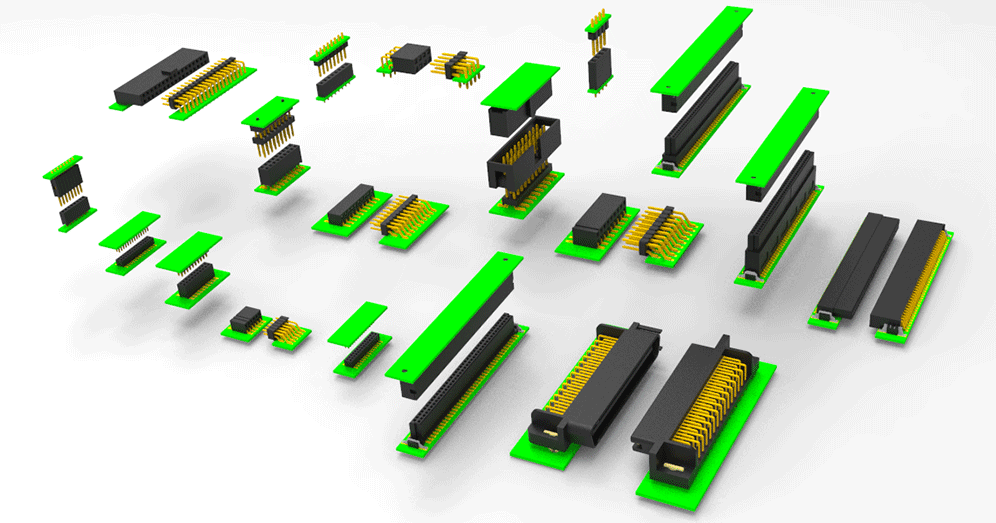
What are the orientation options for connectors?
PCB orientation is the relative position of two PCBs to be connected by BTB connectors. Here are some of the common orientations of BTB connectors:

In order to cater various PCB orientations (Parallel, Horizontal, Perpendicular), board-to-board connectors have been developed in straight, right angle and U-shaped design.
- Straight connectors mate vertically on the PCBs. When PCBs are oriented in parallel, we use Straight connectors.
Straight (Through-Hole) Type:
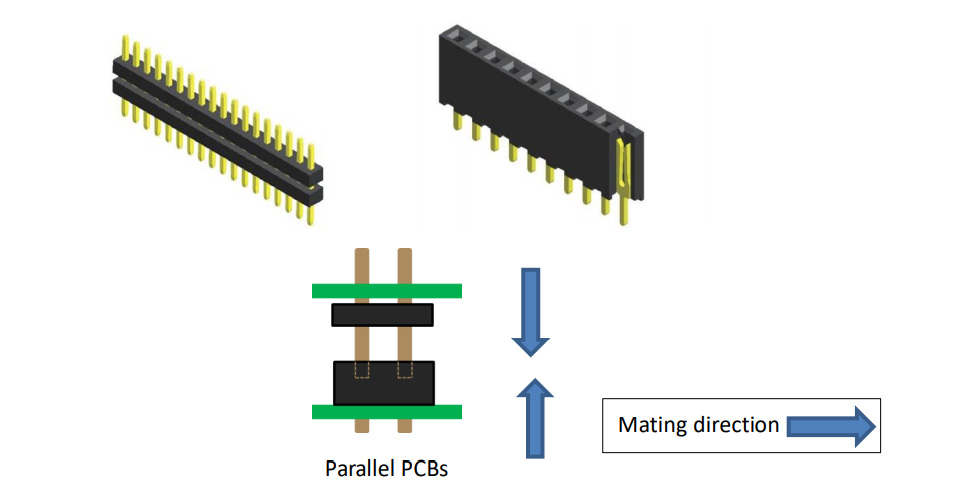
Straight (SMT) Type:
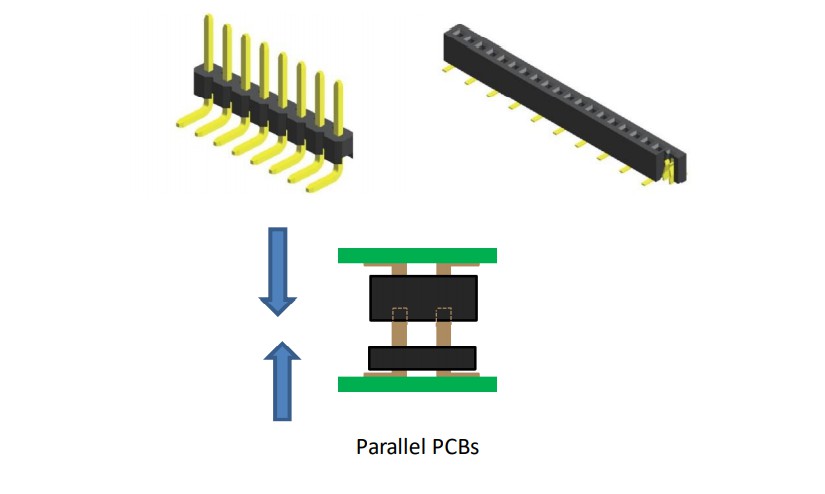
- Right-angled connectors mate horizontally on the PCBs. When PCBs are oriented in horizontal, we use Right-angled connectors.
Right-angled (Through-Hole) Type:
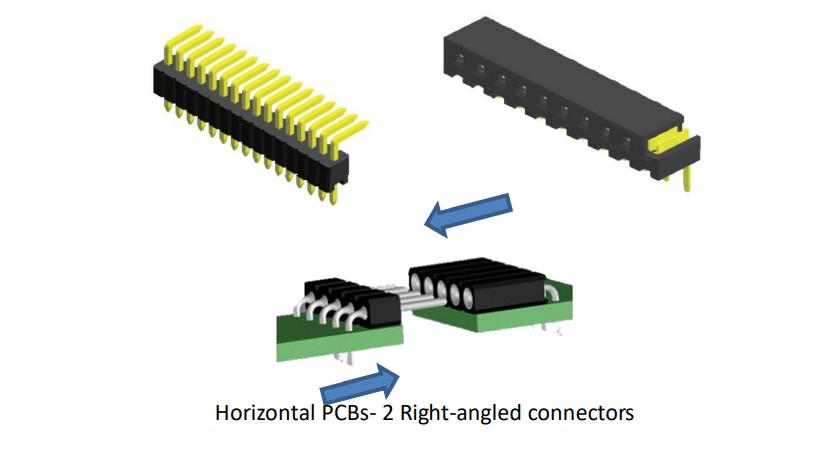
Right-angled (SMT) Type:
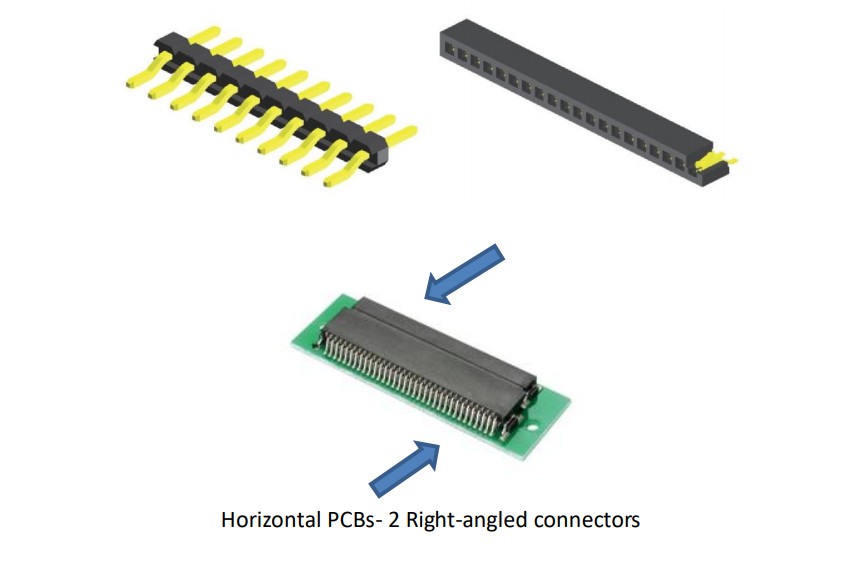
- Lastly, a combination of straight and right-angled connectors can connect PCBs that are perpendicular to one another.
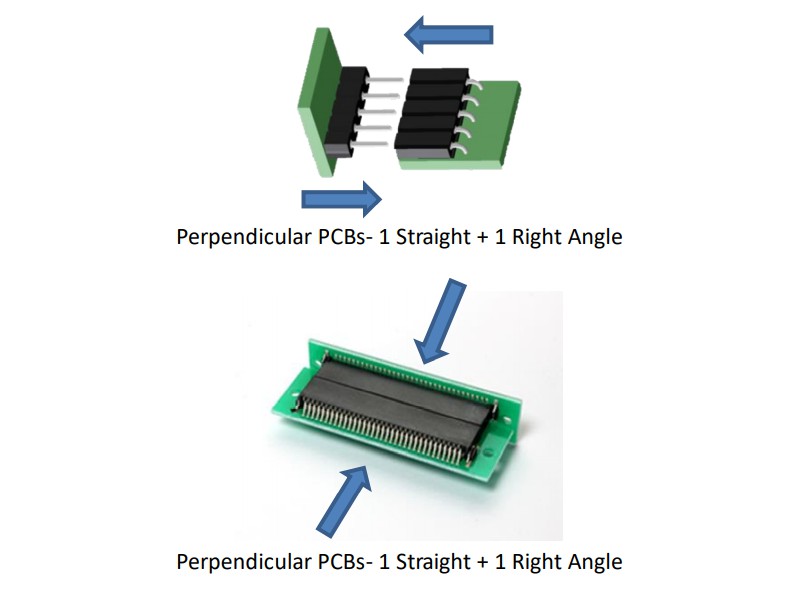
Why we stack PCBs?
Amid the trends of miniaturization, light weight and high speed, designers often face many constraints, both mechanically, and electrically. Different stacking options offer different advantages.
Vertical - Parallel, Mezzanine - Both connectors are in vertical orientation. It allows one to stack on top of the other one, minimize the surface area as a result.
Horizontal - 180 Degree, Coplanar, Edge-to-Edge - Both connectors are in horizontal orientation. From the design standpoint, this keeps the mating centerline low profile to the PCBs.
Perpendicular - Motherboard to Daughterboard - Connectors are perpendicular to one another. This is commonly seen in hard drive applications that one can stack many “Daughterboards” onto one motherboard, expanding the data storage space efficiently.
Here are some other advantages:
The design can be modularized into smaller PCBs and the PCBs can be connected by BTB connectors later through assembly. This not only improves the design process but also allows modifications to be easily done, separately.
From the assembly perspective, it can improve manufacturability of the product, by operating with smaller PCBs rather than one large PCB.
Stacking PCB layer properly can enhance the EMC (Electromagnetic Compatibility) of the design.



